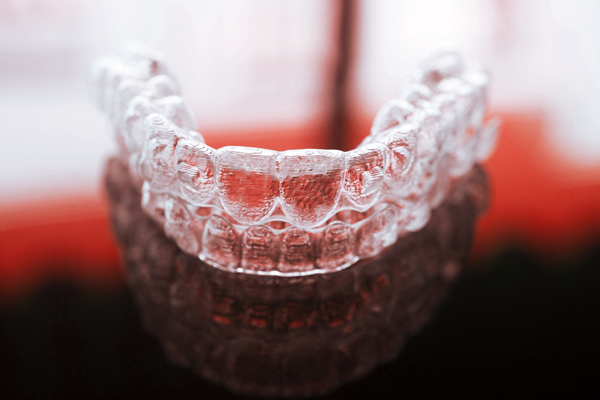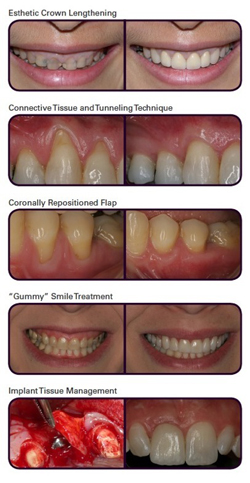3 Common Invisalign® Mistakes (And What to Do Instead)

Invisalign® and other types of clear aligners are a great treatment option for certain patients who want straighter teeth. Many doctors offer this service because patients want it and it’s relatively easy to become trained and start offering the service right away. Unfortunately, it’s also common to make costly mistakes with clear aligners, especially when you are just starting out with the treatment.
We put together this quick list of the common mistakes we’ve seen doctors make with clear aligners, and what you can do to avoid making these errors in the future.
1. Allowing the technician to dictate the treatment plan
Invisalign cases should be diagnosed and treatment planned by you, the doctor. It is your job to tell the technician how to move the teeth on the ClinCheck®.
Unfortunately many doctors do not do a review of the ClinCheck they get back, or know what to look for. They may see teeth straightening and think this will make a successful finish. At the end of treatment, patients should not only have straight teeth, but also have a full smile with good function, so you must be diligent in setting up the right design.
When you get the ClinCheck back, we suggest you look at some diagnostic items like your patients’ curve of spee, teeth width and esthetics, and spacing, to ensure that the appliance is set up correctly. You should also look at each arch individually so that you catch any missed spaces or teeth going to erupt. Customizing the appliance enables you to best fit your patients’ case goals and avoid excessive spacing, unexpected crowding, immobile teeth, or unaesthetic finishes. For this reason, we recommend that a ClinCheck should never be approved the first time around.

2. Not checking for tight contacts when teeth are moving
Many doctors may not realize that adding force when there’s no space can affect more than just tooth rotation. If the contacts are tight and the aligners add new force, teeth will not have room to move as expected and will end up intruding. Check contacts at the chair every appointment to avoid this unaesthetic mistake.
3. Failing to understand how the appliance works
Because the software makes set up so easy, many dentists forget to think about the forces they’re applying when providing aligners. Dental principles and treatment planning should still be addressed.
Before approving the appliance, think how the teeth should move during treatment at how they should fit together in your patient’s face at the finish. If you’re using an attachment, you should understand the movement the tooth should have and the adequate velocity and force needed. Don’t forget to properly diagnose and treatment plan your aligner cases, because you control the success (or not) of your results.

Keep these suggestions in mind for your next clear aligner case. We hope that you can avoid these typical pitfalls so that your Invisalign treatment stays easy and profitable. With practice and diagnostic skills, you will become confident and successful.
If you’d like to gain more clear aligner tips and tools, attend our course Clear Aligner Diagnosis this spring. Instructor Dr. Daniel Azani will give you further coaching on how to be successful with aligners and will even offer his expert advice on your own personal cases. With his orthodontist background, he will provide unique orthodontic diagnostic tools to make your aligner cases predictable and worry-free.
One Response to “3 Common Invisalign® Mistakes (And What to Do Instead)”
Individual Courses
- 2025 Update | Pre-Restorative Orthodontics
- Selective Orthodontics Series
- Adult Orthodontics
- Progressive Aligners
- Assistant & Team Orthodontic Training
- FREE Introduction to Orthodontics
- Gummy Smiles
- Maximizing Your Ortho Business [Online Class]
- Orthodontic Case Finishing
- Orthodontics for Children
- Orthodontic Mechanics
- Essentials of TMD and Botox® in Dentistry
- 21st Century TMD Protocols
- Ultimate Triad







Thanks for this very educational blog post! To keep your teeth healthy while using Invisalign, pay attention to your dental hygiene routine. First, brush your teeth after each meal using a toothbrush or finger brushes and water. Brush both the inside and exterior surfaces of your teeth, including the chewing surfaces and the gum line. You should also floss before going to bed. Brush your teeth at least twice a day for at least two minutes each time.
People who wear braces, such as Invisalign, frequently neglect their oral hygiene practices or refuse to adjust their lifestyle because they are scared it will impair the treatment results. This anxiety, however, is unjustified because taking care of your teeth might actually help you recover faster from orthodontic treatment.